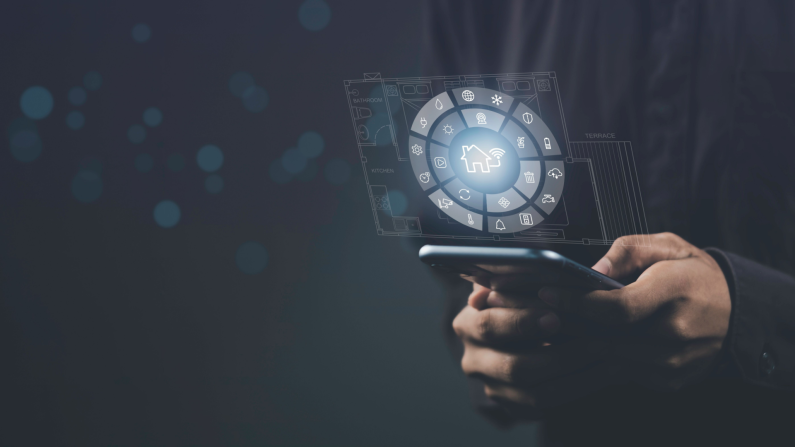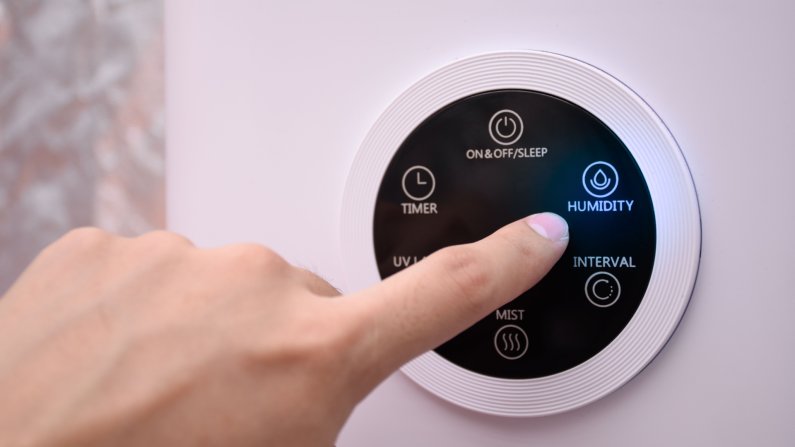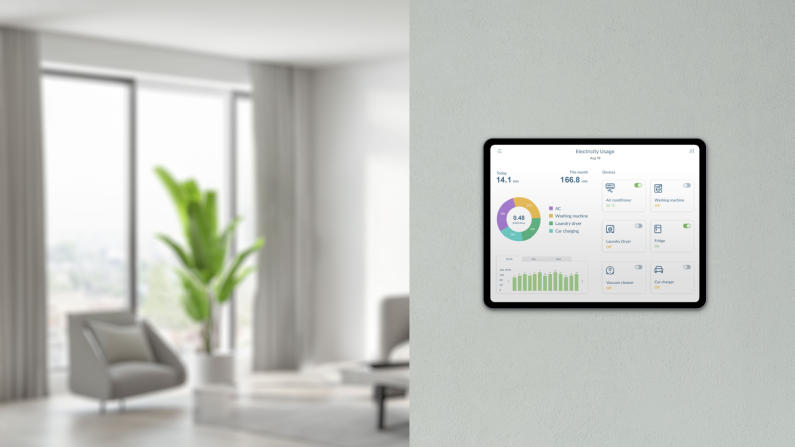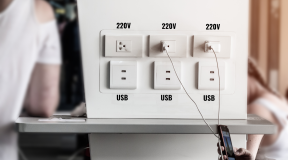Remember those movies about the future where everything starts up, is repaired, and prepared for your morning wake-up automatically?
Like in the series “Black Mirror” or the classic film “Back to the Future,” yeah, that’s the idea. Of course, getting a 3D printer to make you salmon tartlets isn’t quite possible yet, but getting a cup of steaming latte and a clean floor waiting for you in the morning is totally doable. Smart speakers, robotic vacuums, and smart bulbs controlled from your smartphone – that’s just the beginning! Are you ready to find out what awaits us in 2025 and what new gadgets and startups are changing the idea of comfort and convenience in the home right this minute? What’s more, you can buy and implement many of them into your daily life right now!
From “Smart Things” to a “Smart Environment”

The main trend clearly visible in recent years is the transition from separate “smart things” to an integrated “smart environment.” We used to buy individual gadgets, each working by its own rules and requiring a separate app, right? But now the focus is shifting to creating a single ecosystem where all devices interact with each other, thus anticipating our needs and adapting to our way of life.
An example of such an ecosystem is the Samsung SmartThings platform. It combines hundreds of devices from different manufacturers, allowing users to control lighting, heating, security, and entertainment from a single app. SmartThings supports Zigbee, Z-Wave, and Wi-Fi protocols, which provides such flexibility and universal compatibility. Imagine you want to create an atmosphere for watching a movie. With SmartThings, you can dim the lights, close the curtains, and turn on the TV with a single touch, without even getting off the couch. Or, for example, you can remotely check if you turned off the iron, and, if necessary, turn it off through the app when you’re away from home (a lifesaver for people with OCD, isn’t it?).
Something similar is offered by the web service IFTTT (If This Then That). It allows you to connect various online services and smart devices together. So, you can set up automatic lighting in your home when you approach it by car, or automatic heating shut-off when you leave your home. IFTTT can also be used to automatically save photos from Instagram to cloud storage or to receive notifications about new offers from your favorite stores. Essentially, this is an advanced app on your smartphone that combines not only different devices, but also all spheres of life, from social networks to work and everyday life, in one place.
Voice Intelligence: A New Level of Control
Voice assistants have already become a familiar part of a smart home, but in 2025 they will reach a whole new level. It’s not just about performing simple commands, such as “turn on the light” or “turn it up,” but about being a full-fledged companion to a person, capable of understanding complex requests, predicting your needs, and even conducting meaningful dialogues.
To this end, Amazon is actively developing the capabilities of its voice assistant Alexa. Today, Alexa can not only control smart devices in the home, but also hold a conversation, play music, tell the news, set reminders, and even order goods on the internet for you (“Oh, the flour is gone. Alexa, order and charge it to the card linked to my personal account!”). In addition, Alexa can recognize different voices and memorize the individual preferences of each user, as well as distinguish a child from an adult to filter content. You can simply ask Alexa to set a timer, read you a recipe, or turn on your favorite music, without being distracted from the cooking process, and without even washing your hands.
Of course, we shouldn’t forget about Google Assistant, which has also made significant progress over the past few years. For example, Google Assistant is now able to take into account the context of the conversation and formulate suggestions based on your habits, such as informing you that a new true-crime podcast you like to listen to in your spare time has been found. At the same time, Google Assistant is built into both Google Home smart speakers and Android smartphones, which allows you to “take it with you.”
A Smart Home That Saves You Money

In the face of rising electricity prices and increased attention to environmental issues, energy efficiency is becoming one of the main priorities in the development of smart homes. It’s not just about using energy-saving light bulbs and A+++ appliances. A Smart Home 2.0 is a system that analyzes energy consumption itself, identifies inefficient spending, and offers optimal ways to supply the home with electricity and other resources.
For example, Sense has developed an energy monitoring system that uses machine learning to analyze data from an electricity meter and identify appliances operating in the home. The system can determine how much energy each appliance consumes and suggest ways to save. Suppose your refrigerator is too old, so it consumes more energy than all the other appliances in your home. In this case, Sense will record this, paying attention to the indicators of each appliance, and will offer a more energy-efficient model. Or, for example, the system may detect that the heating is working in empty rooms and automatically reduce the temperature in those rooms.
Tesla also offers solar panels and Powerwall batteries, and also an energy management system that allows you to make the most efficient use of solar energy and thereby reduce electricity costs.
Maximum Security and Protection from Threats
Smart Home 2.0 is not just about comfort and convenience, but also about security. Modern security systems can protect your home from burglary, theft, fire, and even flooding. All thanks to smart devices!
Such are produced, for example, by Ring, owned by Amazon. Their range includes smart video doorbells, surveillance cameras, motion sensors, and security alarms. The Ring system allows users to remotely monitor their home, communicate with visitors, and receive notifications about suspicious activity, both in the backyard and in the interior rooms. For example, you can see on your smartphone that someone is standing at your door when you are not at home, but talk to them through the video doorbell, as if you were there. If the motion sensors detect suspicious activity, you will immediately receive a notification and be able to view the video recording. Some devices even allow you to immediately report it to the police, how about that?
Another example is Nest, which offers smart smoke and gas leak detectors, as well as smart locks. The Nest system integrates with other smart devices in the home and allows you to create automated security scenarios. For example, if the smoke detector detects a fire, the system will automatically shut off the heating and ventilation to prevent the spread of fire and send a notification to you and the fire department.
By the way, FootLock is developing smart mats that are installed at the front doors and analyze the steps of people entering the house. The mats will be able to recognize different family members by their gait and notify you if a stranger or a courier enters the house (any person can be entered into the “memory” of the mat).
Robot Vacuums Got Even Smarter!

No one is surprised anymore by a plate slowly crawling around the apartment, which sucks up dust and even performs wet cleaning without your participation. But what if such robots could also perform other tasks around the house? And they already can, yes!
Samsung offers the Jet Bot AI+ robot vacuum cleaner, which uses artificial intelligence and cameras to recognize objects and create a map of the room. Jet Bot AI+ can recognize different types of surfaces and automatically adjust the suction power for optimal cleaning. It can also identify objects that need to be removed from the floor and go around them or “climb over”, thanks to which you no longer have to run after the robot and make sure that it does not stumble over the cords or scattered toys. In addition, iRobot is developing Braava jet m6 floor washing robots that are able to automatically wash floors in the house using various modes and types of detergents.
As for breakfast, smart coffee makers, such as Smarter Coffee 2nd Generation, which allow you to set the coffee brewing time in advance through the mobile application, have already entered into use. You can set an alarm and wake up to the aroma of freshly brewed cappuccino, or you can set the coffee maker to make coffee for your return home. Some models even integrate with voice assistants, such as Alexa, allowing you to control the coffee maker using voice commands.
Automated robot folders, alas, have not yet become widespread, but there are robot folders! Innovative devices, such as FoldiMate, which, at the very least, fold clothes on their own. After loading clean clothes into FoldiMate, the machine neatly packs it in the right way, saving you time and space in the closet. All you have to do is take and transfer the folded stack to the right place!
And companies like Townew are developing smart trash cans that automatically seal and change trash bags. This avoids unpleasant odors and simplifies the process of removing garbage. Smart trash cans can also track the amount of trash and order new bags when they run out. In addition, the startup Aera offers smart air fresheners that allow you to create personalized fragrances for your home.
Smart Devices Instead of Doctors and Diagnostics
Smart homes are increasingly used to monitor the health and well-being of residents. It is not only about using smart scales and fitness trackers, but also about creating comprehensive systems that monitor various health parameters, such as heart rate, blood pressure, body temperature and sleep quality, which can be especially important for elderly people living alone.
Withings offers Body Scan smart scales that measure not only weight, but also body composition, heart rate and vascular age. The scales integrate with a mobile app that allows users to track their results and receive personalized recommendations for improving their health. In addition, this allows you to quickly and easily, literally with one click, transfer your data to the doctor.
Philips offers smart Hue lamps, which allow you to adjust the brightness and color temperature of the light depending on the time of day and the activity of the residents. Studies show that proper lighting can improve mood, well-being, and sleep quality, which is also an important aspect of a smart home’s care for your health. You can set up the lighting system so that in the morning the light, imitating the sunrise, gently wakes you up, and in the evening the light becomes warmer and more relaxing, helping you to prepare for sleep.
If you have problems with overeating or just want to limit access to certain foods during a diet, there are smart refrigerator locks from eFridge. They allow you to lock the refrigerator or certain shelves in it for a certain time or on certain days. Locks can be controlled via a mobile app or using RFID cards.
Companies like View, Inc. produce dynamic smart windows that automatically adjust the level of dimming depending on the sunlight. This reduces heating and air conditioning costs and improves comfort in the room by blocking bright light and glare.
What Else “Smart” Can You Add to Your Home?

Of course, the latest smart homes are no longer limited to all of the above. Have you heard of HiMirror smart mirrors? They analyze skin condition, track changes, and provide care recommendations. They can even analyze wrinkles, redness, dark circles under the eyes, and other parameters, and then offer you personalized advice on makeup and skincare. Some models are additionally equipped with built-in LED lamps that simulate different lighting conditions to help you choose the perfect makeup for any occasion. This is for those very situations when you stand and can’t understand if you’ve painted yourself like a clown or if it’s all about the too bright lamp that makes you look like that.
Companies such as Fluval produce smart aquariums that automate fish care. These aquariums are equipped with built-in filtration, lighting, and feeding systems that are controlled via a mobile application. You can set a feeding schedule, adjust the lighting to simulate sunlight, and receive notifications about the need to replace the filter or other care activities. This greatly simplifies aquarium care and makes it more accessible to owners.
And more and more advanced smart toilets are appearing on the market, offering comfort and functionality. Such toilets, for example, from Toto, may include heated seats, automatic flushing, a bidet with adjustable water temperature, and even an air deodorization system. Some models are also equipped with a urine analysis function to monitor health. Such toilets have already become widespread in Japan, and similar ones are even installed in hotels for foreigners.
And smart beds, such as those from Sleep Number, use built-in sensors to track sleep quality, body position changes, and breathing. They can automatically adjust the firmness of the mattress for optimal support and comfort. Some models are even equipped with a heating and massage function! Literally a spa at home.
Smart Home 2.0 is not just a set of gadgets and devices. It is a revolutionary approach to how a person should live and feel. Life is not only getting easier, but also safer, more profitable and healthier. In the coming years, more and more devices will move to full automation, and the range of tasks of robots will expand up to cooking (now such technologies are only available in restaurants and public catering outlets, but as soon as it is possible to make their production cheaper, devices for individual use may appear). One should also expect integration with virtual or augmented reality, which will create new opportunities for entertainment and learning, as well as for design and creativity. Take, for example, Artisan Table - a smart table for artists and designers, which combines a traditional work table with digital functions, such as a built-in touch screen or the ability to connect to a tablet and an interactive display.
In short, further - more. Very soon, your home will turn into a super-smart fortress that you won't even want to leave. Oh, we wish it would happen soon!
Share this with your friends!






Be the first to comment
Please log in to comment